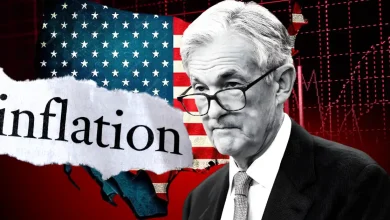
October 2025 crypto crash erases $370B; Bitcoin dips to $104K, Ethereum below $4K amid $19B in liquidations and $65B open interest drop.
Paxos mints $300 trillion PYUSD stablecoins by error; crypto market turmoil follows Bitcoin whale activity and geopolitical tensions.
October 2025 proved to be one of the harshest months for the crypto market. In October itself, the market erased over $370 billion in value, with Bitcoin plunging to $104,000, Ethereum dipping below $4,000, and many altcoins dropping 50–90%.
Traders liquidated more than $19 billion, while spot crypto ETFs saw hundreds of millions in outflows as investors rushed to reduce risk. The sudden market crash also slashed $65 billion in open interest, effectively resetting trading activity to early-2025 levels.
What Triggered the Sell-Off
According to veteran trader Matthew Dixon, several factors combined to fuel the crash. A Bitcoin whale moved around 2,000 BTC across multiple wallets, signaling potential large-scale selling. Even if these coins didn’t immediately hit exchanges, the market reacted defensively, anticipating increased supply. Institutional liquidity also shrank, with over $500 million withdrawn from crypto funds and ETFs last week, including nearly $950 million in Bitcoin alone.
On-chain data confirmed the pressure: large inflows from top wallets into exchanges typically signal selling, and spikes in this ratio historically precede short-term price drops. At the same time, broader macroeconomic conditions worsened sentiment. Renewed U.S.-China trade tensions, a stronger U.S. dollar, and uncertainty from the U.S. government shutdown pushed investors toward safer assets, further amplifying crypto’s volatility.
Other Factors Leading to the Crash
The crash was also accompanied by operational mishaps, including Paxos accidentally minting $300 trillion in stablecoins due to a technical error. Such incidents underscore the sector’s operational risks. On a brighter note, crypto continues to find real-world use cases, such as in India’s real-money gaming sector, where digital assets are helping users bypass regulatory restrictions.
Even as some assets rallied under narrative-driven trades like the “debasement trade,” macro indicators show limited evidence of a broad dollar collapse, keeping the rebound fragile. Currently, Bitcoin has recovered to around $107,978 and Ethereum to $3,882 but experts warn that trade tensions, regulatory uncertainty, and liquidity constraints still leave the market vulnerable.
Never Miss a Beat in the Crypto World!
Stay ahead with breaking news, expert analysis, and real-time updates on the latest trends in Bitcoin, altcoins, DeFi, NFTs, and more.
FAQs
Bitcoin plunged to $104,000 and Ethereum dipped below $4,000, while many altcoins dropped 50–90% amid market panic.
They were a major factor. Investors pulled nearly $950 million from Bitcoin ETFs alone, reducing institutional liquidity and accelerating the market-wide sell-off.
Bitcoin rose to $107,978 and Ethereum to $3,882 post-crash, but trade tensions, regulatory risks, and low liquidity keep the market fragile.
Trust with CoinPedia:
CoinPedia has been delivering accurate and timely cryptocurrency and blockchain updates since 2017. All content is created by our expert panel of analysts and journalists, following strict Editorial Guidelines based on E-E-A-T (Experience, Expertise, Authoritativeness, Trustworthiness). Every article is fact-checked against reputable sources to ensure accuracy, transparency, and reliability. Our review policy guarantees unbiased evaluations when recommending exchanges, platforms, or tools. We strive to provide timely updates about everything crypto & blockchain, right from startups to industry majors.
Investment Disclaimer:
All opinions and insights shared represent the author's own views on current market conditions. Please do your own research before making investment decisions. Neither the writer nor the publication assumes responsibility for your financial choices.
Sponsored and Advertisements:
Sponsored content and affiliate links may appear on our site. Advertisements are marked clearly, and our editorial content remains entirely independent from our ad partners.








